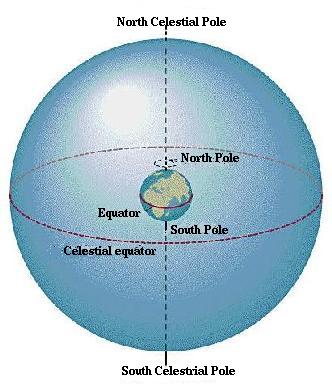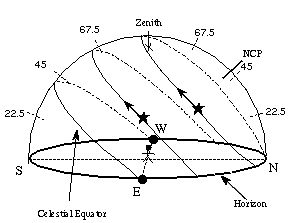
The meridian is the circle running from one pole to the other through a point directly overhead for an observer. The point directly overhead is called the zenith

The celestial poles and equator are the projections of the Earth's poles and equator onto the sky.

